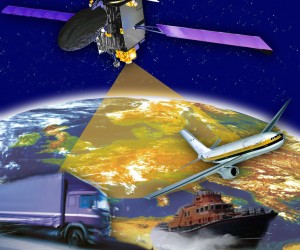Dassault Falcon 900LX is First to Fly Approaches Using Europe’s New EGNOS Satellite Navigation System

Dassault recently flew the first approaches using Europe’s new EGNOS (European Geostationary Navigation Overlay Service) satellite navigation system. EGNOS is expected to vastly improve airport access for aviation throughout Europe. The approaches were flown into Pau Pyrenees airport in France (ICAO: LFBP) on a Falcon 900LX equipped with EASy II, the next generation of Dassault’s award-winning flight deck system.
The EGNOS satellite navigation system consists of a set of geostationary satellites and a network of ground reference stations. It improves the accuracy and integrity of the U.S. GPS satellite system to within one meter horizontally and two meters vertically, allowing LPV (Localizer Performance with Vertical Guidance) approaches down to 250-foot minima. The EGNOS system will offer pilots more direct enroute flight paths, greater runway capability and reduced separation standards without increased risk. It is one of four major Space Based Augmentation Systems (SBAS) either already deployed or planned for the near future, including WAAS, in use in the U.S., MSAS in Japan, and GAGAN in Indian.
Dassault’s team flew seven approaches during the mission, confirming the accuracy and precision of the new signal, which on the runway was close to one foot. “LPV approaches open up accessibility to airports with challenging weather and terrain, while improving the accuracy of the approach,” said Jean-Louis Dumas, the Dassault test pilot who flew the mission. “The mountainous terrain in southwest France where we flew repeated approaches is a perfect example of how the new features in EASy II, like synthetic vision, when combined with improved navigation tools like EGNOS, drastically enhance a pilot’s situational awareness and safety margins.”
“The availability of the EGNOS system is an important step for the European aviation community that will improve accessibility and safety, much like the WAAS system has done for the United States,” said John Rosanvallon, President and CEO of Dassault Falcon. “The development of new features in EASy II, including the ability to use the EGNOS system, puts a new and more effective suite of tools at the disposal of Falcon pilots, improving their ability to fly farther, safer and more efficiently.”
LPV approach capability will be available to pilots of Falcon 900LX aircraft with the introduction of EASy II in the summer of 2011. To date, there are more than 2,300 such approaches in the United States.
EASy II Enhancements
The next generation of improvements to Dassault’s EASy flight deck (known as EASy II), will offer a number of new options and enhancements, including: a Synthetic Vision System (SVS); improved display symbology; an update to the Flight Management System (7.1); improved Take Off and Go Around capability; a Runway Awareness and Advisory System (RAAS); and an enhanced navigation package that includes WAAS- LPV and RNP SAAAR.
Other new options available in EASy II include Automatic Decent Mode (ADM); XM Graphical Weather integrated into the INAV map and ADS-B Out (Automatic Dependant Surveillance -Broadcast).
Two new communication features, FANS 1A and PM-CDPLC (Controller Pilot Data Link Communication) compliant with Europe’s new datalink mandates, will be also available for Falcon 7X, 2000EX/LX and 900EX/LX aircraft.
Certification of EASy II is expected in June of this year and will be available on the Falcon 900LX immediately and for other 900 EASy aircraft as a retrofit. EASy II will be made available for the 7X in the third quarter of 2012, and for Falcon 2000 EASy variants in the fourth quarter of 2012.